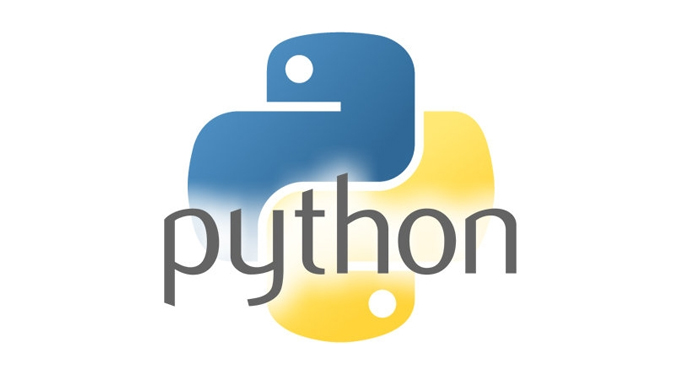 全国服务热线:400-035-8011
全国服务热线:400-035-8011 全国服务热线:400-035-8011
全国服务热线:400-035-8011位置:成都兄弟连IT培训学校 > 学校动态 > 如何使用Python操作Git代码 GitPython入门介绍
今天,我在查阅如何用 Python 操作 Gitlab 的时候,看到这篇文章,觉得还不错,特分享给大家。文中还提到了其它几种操作 Git 的方法,后续有机会的话,再陆续分享之~~有时,需要做复杂的 Git 操作,并且有很多中间逻辑。用 Shell 做复杂的逻辑运算与流程控制就是一个灾难。
所以,用 Python 来实现是一个愉快的选择。这时,就需要在 Python 中操作 Git 的库。GitPython 简介GitPython是一个与Git库交互的Python库,包括底层命令(Plumbing)与高层命令(Porcelain)。
它可以实现绝大部分的Git读写操作,避免了频繁与Shell交互的畸形代码。它并非是一个纯粹的Python实现,而是有一部分依赖于直接执行git命令,另一部分依赖于GitDB。GitDB也是一个Python库。它为.git/objects建立了一个数据库模型,可以实现直接的读写。由于采用流式(stream)读写,所以运行、内存占用低。GitPython安装pip install GitPython

其依赖GitDB会自动安装,不过可执行的git命令需要额外安装。基本用法
init
import git
repo = git.Repo.init(path='.')
这样就在当前目录创建了一个Git库。当然,路径可以自定义。由于git.Repo实现了__enter__与__exit__,所以可以与with联合使用。with git.Repo.init(path='.') as repo:
# do sth with repo
不过,由于只是实现了一些清理操作,关闭后仍然可以读写,所以使用这种形式的必要性不高。详见附录。
clone
clone分两种。一是从当前库clone到另一个位置:new_repo = repo.clone(path='../new')
二是从某个URL那里clone到本地某个位置:new_repo = git.Repo.clone_from(url='git@github.com:USER/REPO.git', to_path='../new')
commit
with open('test.file', 'w') as fobj:
fobj.write('1st line
')
repo.index.add(items=['test.file'])
repo.index.commit('write a line into test.file')
with open('test.file', 'aw') as fobj:
fobj.write('2nd line
')
repo.index.add(items=['test.file'])
repo.index.commit('write another line into test.file')
status
GitPython并未实现原版git status,而是给出了部分的信息。>>> repo.is_dirty()
False
>>> with open('test.file', 'aw') as fobj:
>>> fobj.write('dirty line
')
>>> repo.is_dirty()
True
>>> repo.untracked_files
[]
>>> with open('untracked.file', 'w') as fobj:
>>> fobj.write('')
>>> repo.untracked_files
['untracked.file']
checkout(清理所有修改)
>>> repo.is_dirty()
True
>>> repo.index.checkout(force=True)
<generator object
>>> repo.is_dirty()
False
branch
获取当前分支:head = repo.head
新建分支:new_head = repo.create_head('new_head', 'HEAD^')
切换分支:new_head.checkout()
head.checkout()
删除分支:git.Head.delete(repo, new_head)
# or
git.Head.delete(repo, 'new_head')
merge
以下演示如何在一个分支(other),merge另一个分支(master)。master = repo.heads.master
other = repo.create_head('other', 'HEAD^')
other.checkout()
repo.index.merge_tree(master)
repo.index.commit('Merge from master to other')
remote, fetch, pull, push
创建remote:remote = repo.create_remote(name='gitlab', url='git@gitlab.com:USER/REPO.git')
远程交互操作:remote = repo.remote()
remote.fetch()
remote.pull()
remote.push()
删除remote:repo.delete_remote(remote)
# or
repo.delete_remote('gitlab')
其它
其它还有Tag、Submodule等相关操作,不是很常用,这里就不介绍了。GitPython的优点是在做读操作时可以方便地获取内部信息,缺点是在做写操作时感觉很不顺手,隔靴搔痒。当然,它还支持直接执行git操作。git = repo.git
git.status()
git.checkout('HEAD', b="my_new_branch")
git.branch('another-new-one')
git.branch('-D', 'another-new-one')
这……感觉又回到了老路,而且仍然感觉怪怪的。其它操作Git的方法
subprocess
这就是所谓『老路』。在另一个进程,执行Shell命令,并通过stdio来解析返回结果。import subprocess
subprocess.call(['git', 'status'])
dulwichdulwich是一个纯Python实现的Git交互库,以后有空再研究吧。
pygit2
pygit2是基于libgit2实现的一个Python库。底层是C,而上层Python只是接口,运行效率应该是高的,然而孤还是放弃了。其缺点是,需要环境中预先安装libgit2。相比之下,GitPython只需要环境预置Git,简单多了。
《GitPython Documentation》
《Welcome to GitDB’s documentation!》
《Git - 底层命令 (Plumbing) 和高层命令 (Porcelain)》
《GitPython | Hom》
附录在git.Repo中对context相关接口的实现如下: def __enter__(self):
return self
def __exit__(self, exc_type, exc_value, traceback):
self.close()
def __del__(self):
try:
self.close()
except:
pass
def close(self):
if self.git:
self.git.clear_cache()
gc.collect()
gitdb.util.mman.collect()
gc.collect()
可见只是一些清理操作,关闭的必要性不高。即使关闭,也仍然可以对这个git.Repo的instance进行读写操作。
尊重原创文章,转载请注明出处与链接:http://www.peixun360.com/1850/news/108519/违者必究! 以上就是成都兄弟连IT培训学校 小编为您整理 如何使用Python操作Git代码 GitPython入门介绍的全部内容。